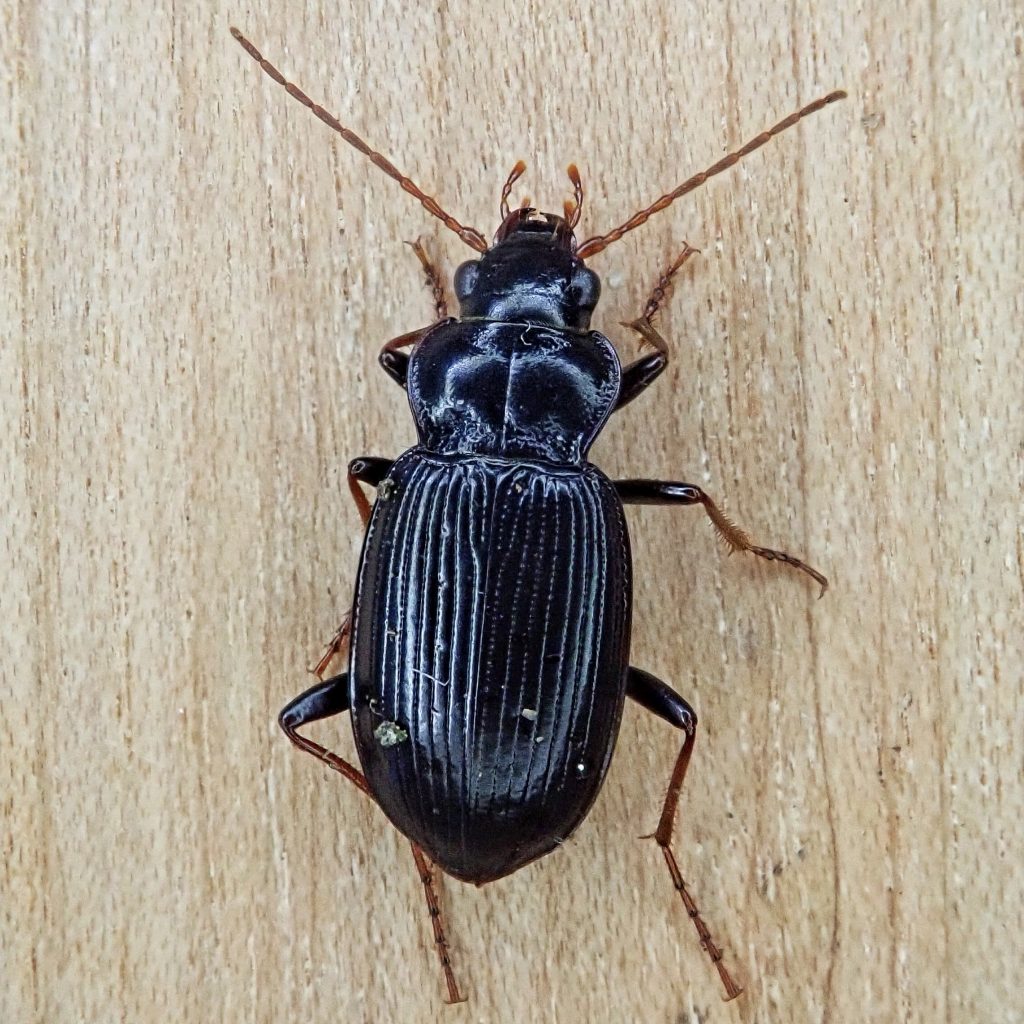
Nebria brevicollis was first found in the US, in Oregon’s Willamette Valley, in 2007. By 2010 it had more than doubled its range and specimens had been found in Washington. And now, 13 years later, it is well established west of the Cascades in both states. However JR Labonte says that, despite its rapid spread, there isn’t yet evidence that it falls into the category of invasive, which also includes what he defines as “… has detrimental effects on the native biota OR has deleterious economic (including detrimental effects on desirable exotic biota) or human health effects.”(LaBonte 2011).
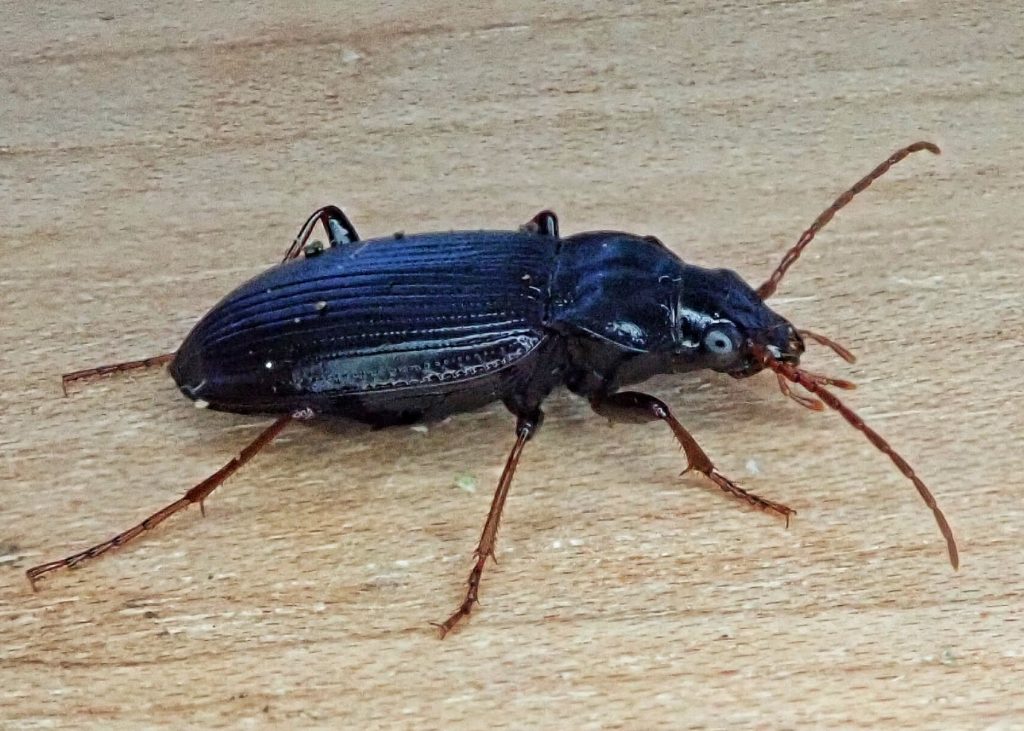
The reason this species has spread so rapidly, in addition to the fact that it is a good flier and probably hitchhikes on plant materials in transit and motor vehicles in general, is that it is able to adapt to a wide range of habitats, and to exploit a variety of foraging niches. It is active year around except for the coldest part of winter and the hottest part of summer, and may even be active then if the season is mild. And, according to anecdotal reports of first instar larvae in late fall, it may have a second breeding season in the fall.

European Gazelle Beetles are small (10-14mm long) shiny, black ground beetles (family Carabidae), which superficially resemble a multitude of little black beetles. Some traits which help distinguish it from them is that the legs and antennae are brown, the pronotum is narrower at the rear than the front and has dense and coarse punctures along the rear and sides, and the elytral grooves have small but distinct punctures along their entire length. Beyond this one requires a microscope, a key, and the knowledge to utilize them correctly. I am indebted to my friend Craig Sondergaard for being in possession of all three, and for identifying this beetle for me.
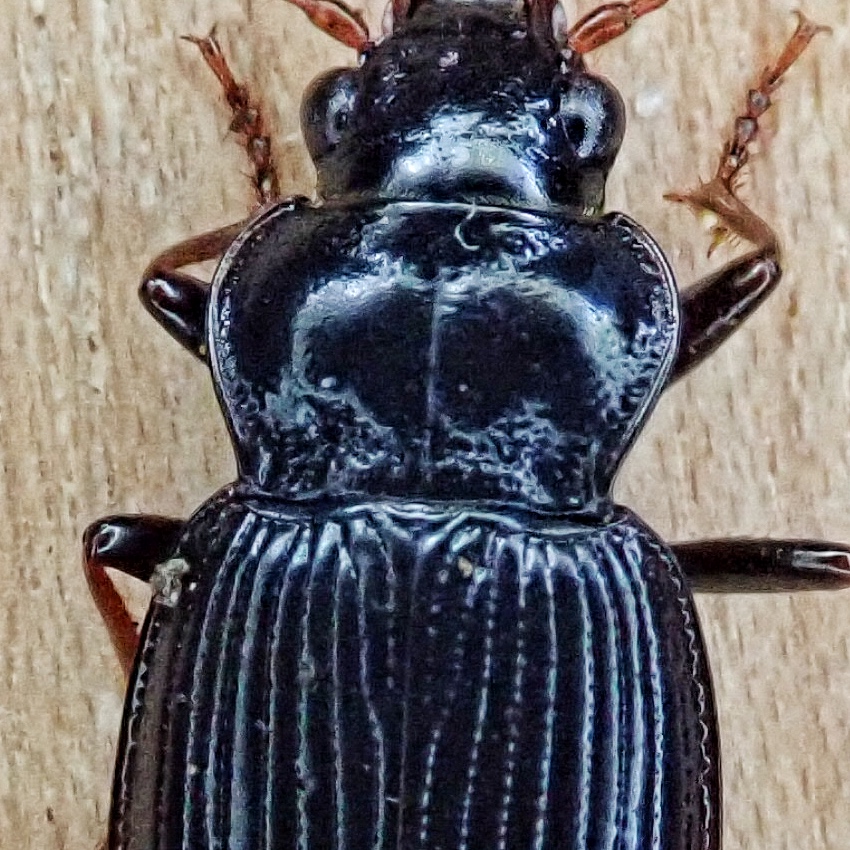
Like most Carabids, Nebria brevicollis are voracious predators which are not picky about their prey, although size and morphology constraints limit them to prey 5mm long or less.
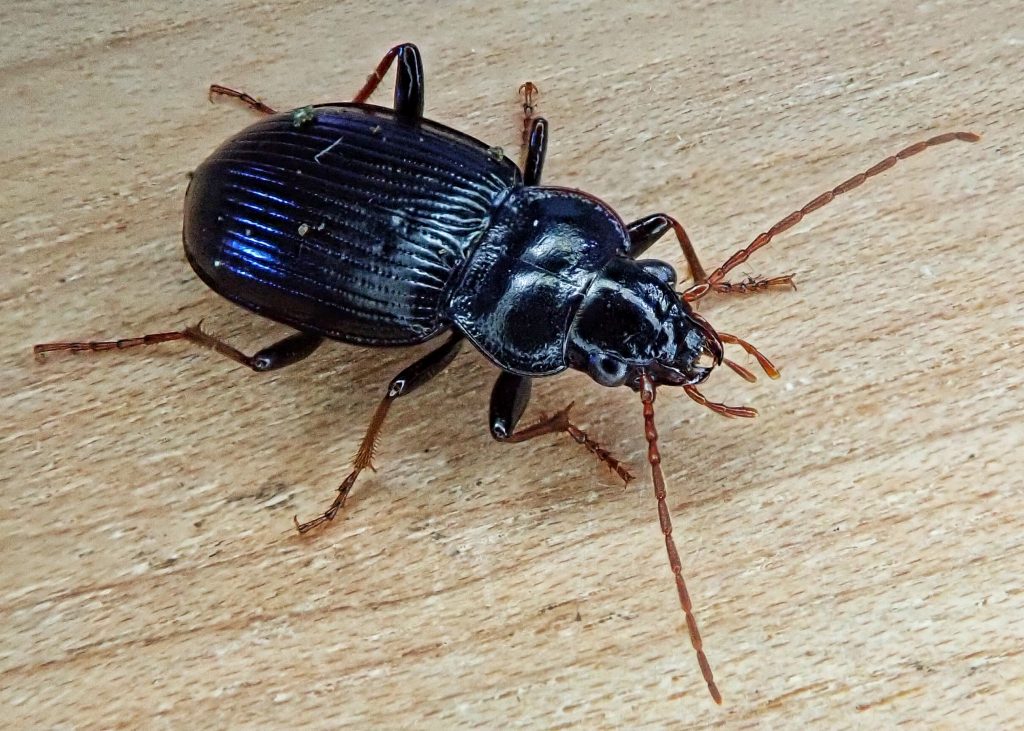
https://bugguide.net/node/view/478198
https://www.ncbi.nlm.nih.gov/pmc/articles/PMC3286253/#!po=35.8333
http://researcharchive.calacademy.org/research/scipubs/pdfs/v59/proccas_v59_n09.pdf
Size- 10-14mm
Habitat- wide variety, from anthropogenic urban and agricultural areas to old growth forests
Range- So far it is only found west of the Cascades in Oregon and Washington
Eats- Whatever it can subdue, up to about 5mm
Flight Season- Adults active in all but hottest and coldest times.
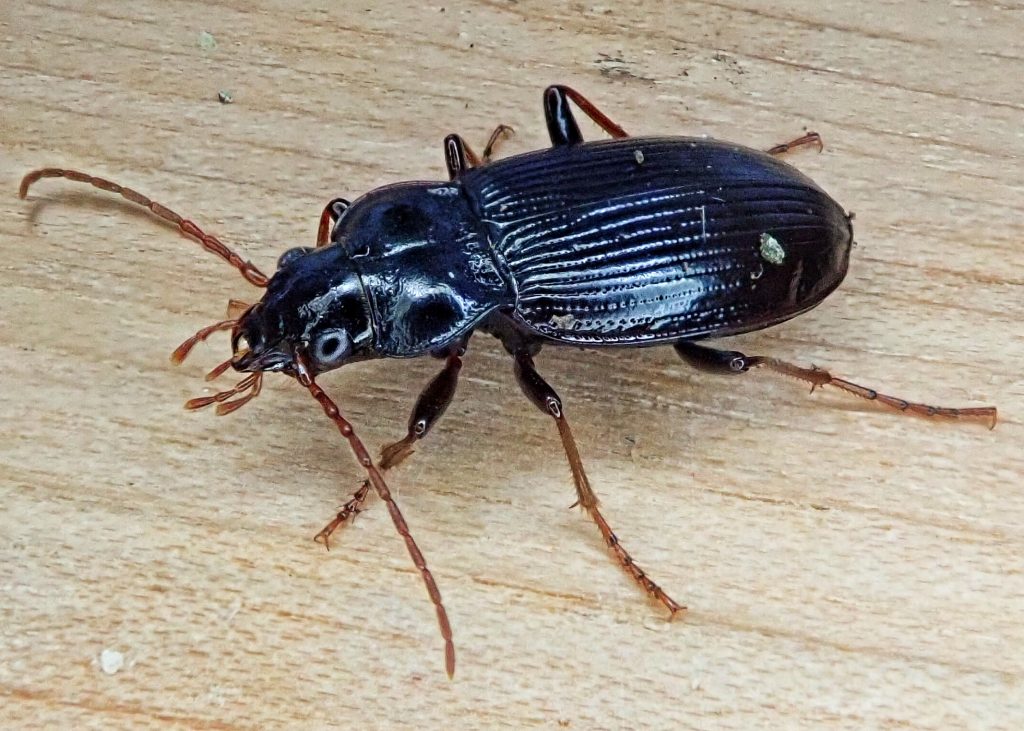
Dang! This is my third try to send a note. I like your blog, enjoy your subdued humor and the detail you provide. Photos are terrific.
There is a small group of people keen on insects that have been meeting since 1979 (and that on the heels of high Scarab Dr. Melville Hatch – Beetles of the PNW in 5 volumes). We meet most 4th Mondays of the month at 7pm; covid has given us Zoom and a higher meeting attendance than brick-and-morter meetings. https://www.meetup.com/Scarabs-The-Bug-Society/. We also have our own website hosted by Rod Crawford at the Burke Museum but I don’t have it in my to look it up and lose this version.
You might also like to know of James C. Bergdahl, the reason I lost my first draft was looking up his website. So perhaps I’ll send it another time.
Sharon J. Collman
Thank you for your kind words! I will try to remember to check out your meeting. I’ll look at your website, and that of Mr. Bergdahl! Thanks!
Wow – I love their eyes – different than most insects!